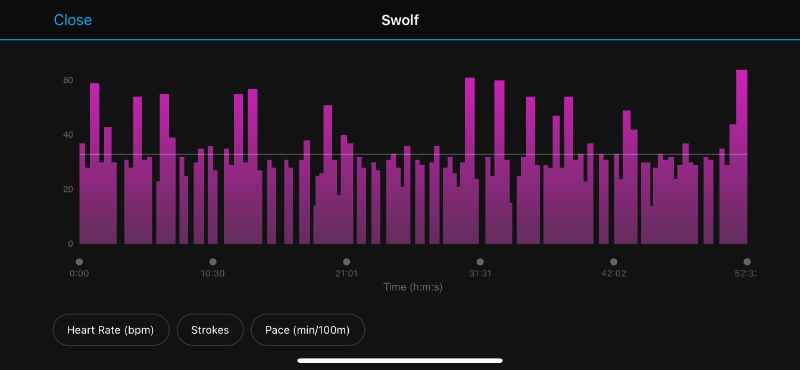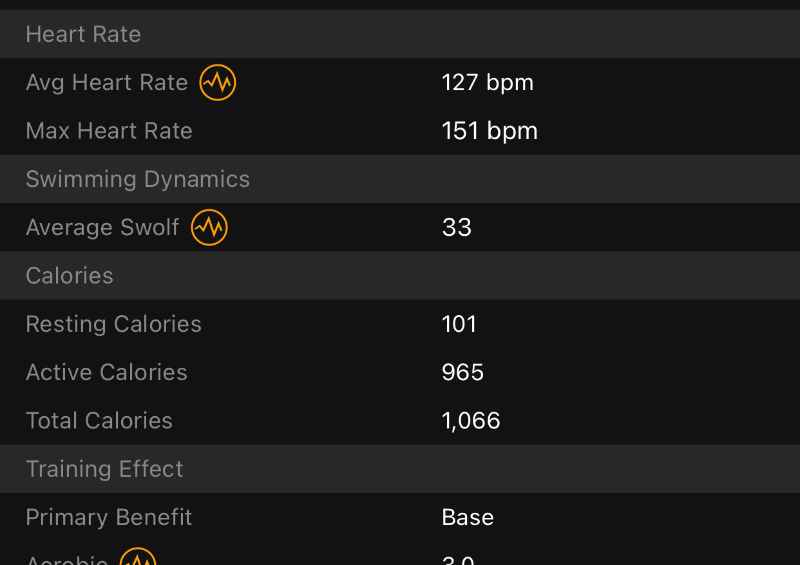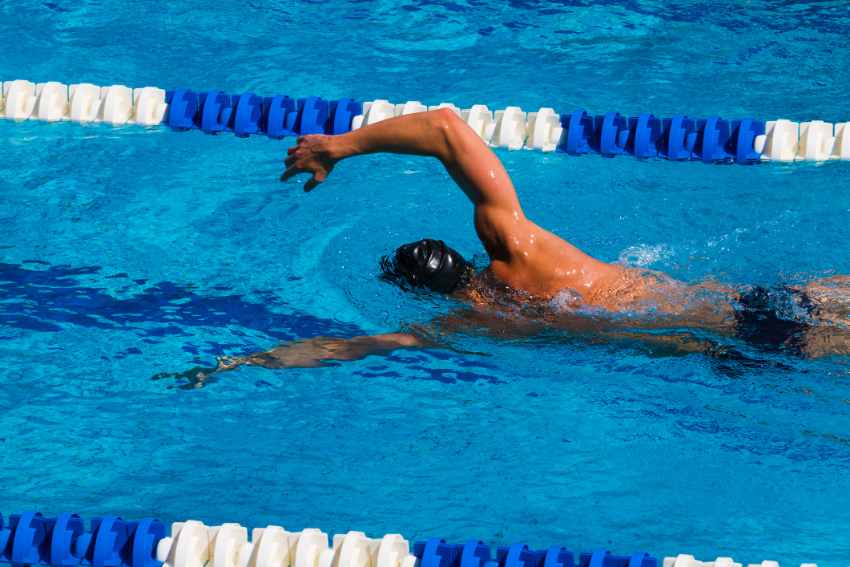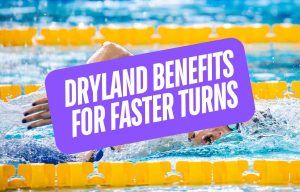SWOLF is a way to measure efficiency and encourage you to be a better swimmer. Here’s everything you need to know about SWOLF, including how to improve your score in the water.
SWOLF sounds scary and like something that would stalk you in the dead of night as you walk home after a long session at the pool.
If you’ve purchased a smartwatch for swimming or just about any kind of waterproof fitness tracker you’ve likely stumbled upon it among the mountain of data.
In this guide, we will take a cold, deep, and hard look at SWOLF, how it can help you become a better swimmer, what a “good” SWOLF score is, and how you can work to lower it.
Let’s jump right in!
SWOLF – What Is It?
SWOLF is a portmanteau of swimming and golf.
SWOLF is a score that combines the number of strokes you take and the amount of time it takes you to swim a lap into a single figure.

For example, if you swim 50m in 40 seconds and take 30 strokes, you’d have a SWOLF score of 70.
- 40 seconds + 30 strokes = 70 SWOLF score
As with golf, a lower SWOLF number is considered good and is reflective of increased speed and efficiency in the water.
While most swimmers focus solely on how long it takes for them to swim a lap, or a pair of laps, a SWOLF score gives you another metric with which to measure your swimming.
The lower your SWOLF score, the more efficient you are of a swimmer.
Why Does SWOLF Matter?
Your SWOLF score takes two crucial numbers, one regarding your speed in the water and the other measuring your efficiency in the water to give you a holistic number that does a good job of reflecting how good of a swimmer you are.
When you see elite swimmers in the water, they move with grace and precision, but they also take fewer strokes.
This is because they are exceptionally efficient, maximizing every last stroke and kick in the water. By traveling across the pool with fewer strokes, they can swim longer and faster.
SWOLF is a data metric designed to encourage you to think of both in terms of speed and efficiency.
SWOLF Can Help You Stay Motivated in the Water
The reality is that as you improve in the water, you won’t see the big leaps and bounds that you do as a beginner.
This is just the reality of expertise and mastery—the better you get, the harder it becomes to improve.
But by adding stroke count and SWOLF scores to your training, you get a new metric to try and improve on.
Swimmers, like any other athlete, need to be able to see objective improvement to stay motivated and focused during those long swim workouts at the pool.
SWOLF is another tool for increased engagement and focus at training.

What is a Good SWOLF Score?
SWOLF scores vary widely by swimmer, distance, and stroke.
A sprint swimmer, for example, will generally have a higher SWOLF score during a 50m sprint compared to a distance swimmer.
Below are some examples to give you an idea of what kind of efficiency elite swimmers are capable of:
At the US Open in 2021, Katie Ledecky won the 400m freestyle in a time of 4:00.51.
Here are a couple of SWOLF scores from the race:
- First lap: 36 strokes in 28 seconds = 64
- Fifth lap: 39 strokes in 29 seconds = 68
During the Rio Olympics in 2021, Caeleb Dressel won the 50m freestyle in a blistering time of 21.07 (!!!). During the race, in which he nearly broke the world record, he took just 38 strokes to cross the length of the pool in just over twenty seconds.
- 38 Strokes in 21 seconds = 59
These are just examples for fun, but you can see how unbelievably efficient the best swimmers on the planet can be with their distance per stroke.
How to Improve Your SWOLF Score
Now that you’ve got a new metric to obsess, err, focus on while at the lap pool, here are some tips for how to work on improving and lowering your SWOLF score.
Try to decrease stroke count while maintaining speed.
SWOLF is a great concept as it helps to gamify your swimming. Instead of just focusing on crossing the pool faster, you can also work on swimming the same speed with fewer strokes.
This is the magic of SWOLF and stroke counting—it gives you another metric to try and improve in the water.
When getting started out with SWOLF, aim to lower the number of strokes it takes you to complete a length (or two) while keeping your speed the same.
Toy with reducing stroke count and maintaining speed and find that balance between taking too many strokes (and gassing out) and hitting peak efficiency.
Keep your push-offs consistent.
An easy way to game your SWOLF score is by extending your push-off.
Adding several underwater dolphin kicks to your breakout means there is less distance for you to cover with regular swimming, artificially reducing your stroke count.
Strive to push off the same distance of each push-off to get a consistent and honest SWOLF score.
Get in the habit of counting your strokes.
One of the downsides of wearable tech in the pool, whether we are talking about a smartwatch or one of the emerging smart swim goggles on the market, is the reliance on the devices to track and count our strokes.
The practice of counting your strokes each lap gives you something to focus, keeps your mind from wandering, and keeps efficiency front of mind.
Alex Popov, the greatest sprint freestyler in history, had one of the smoothest strokes ever to grace the swimming pool. And this exceptional efficiency was made possible by counting his strokes every time he hit the water.
It encouraged him to focus on ways to lengthen his stroke—a slightly more vertical forearm, a little more extension with the shoulder, kicking through the hand entry—powering him to otherworldly efficiency in the water.
When he broke the world record for the 50m freestyle in 2000, swimming a full-length of the Olympic-sized pool in just 21.64 seconds, Popov took only 31 strokes.
Asked in a recent podcast how often he counted his strokes during training, Popov remarked, “Every length. Every length.”
The Final Lap
SWOLF isn’t the be-all and end-all when it comes to getting better in the water.
But it is an excellent way to generate feedback on how well you are swimming.
At the end of the day, swimming fast is a combination of going fast and being efficient, and introducing SWOLF to your swimming is a great way to stay focused on both!
More Articles Like This
3 Tips for Improving Your Distance Per Stroke. Ready to lengthen out your stroke and be a more efficient swimmer? Here are three actionable ways to get more distance from each pull and stroke in the water.
How to Improve Your Feel for the Water. When you improve your feel for the water you become a more efficient, and ultimately, faster swimmer. Here is how to do it.














